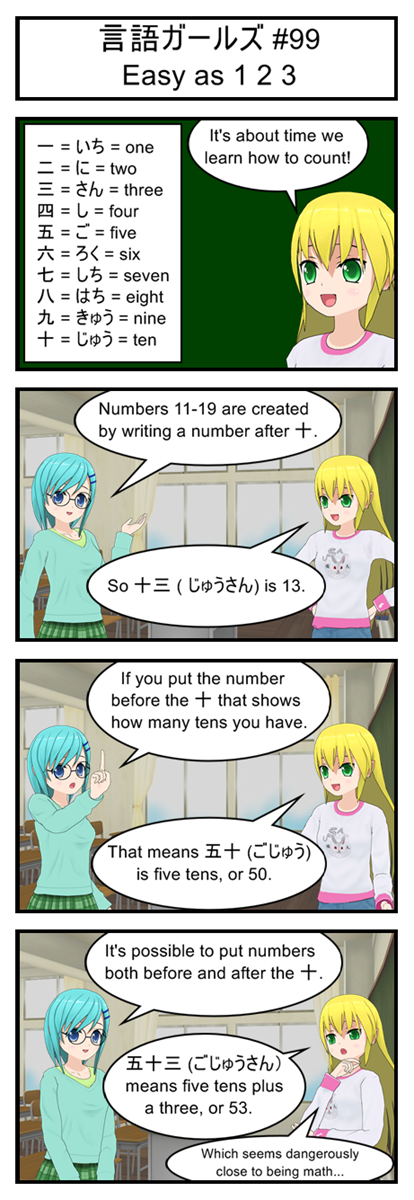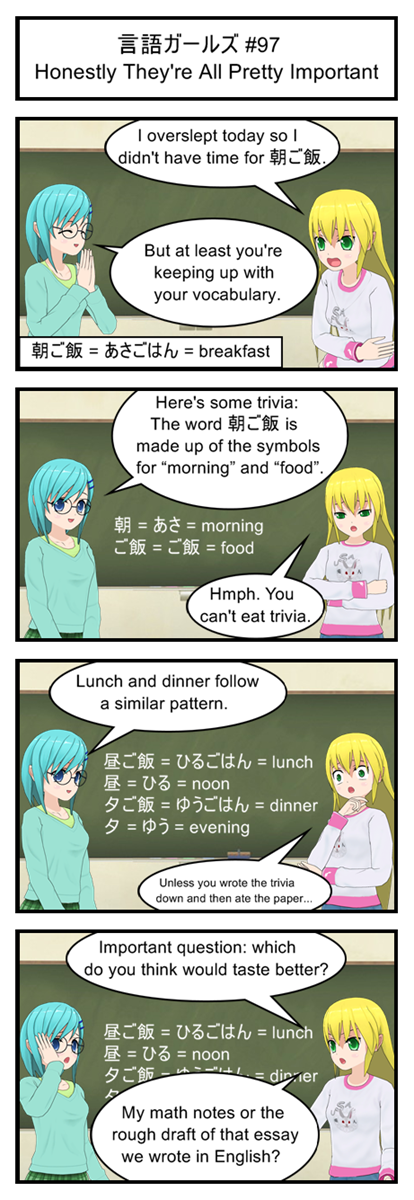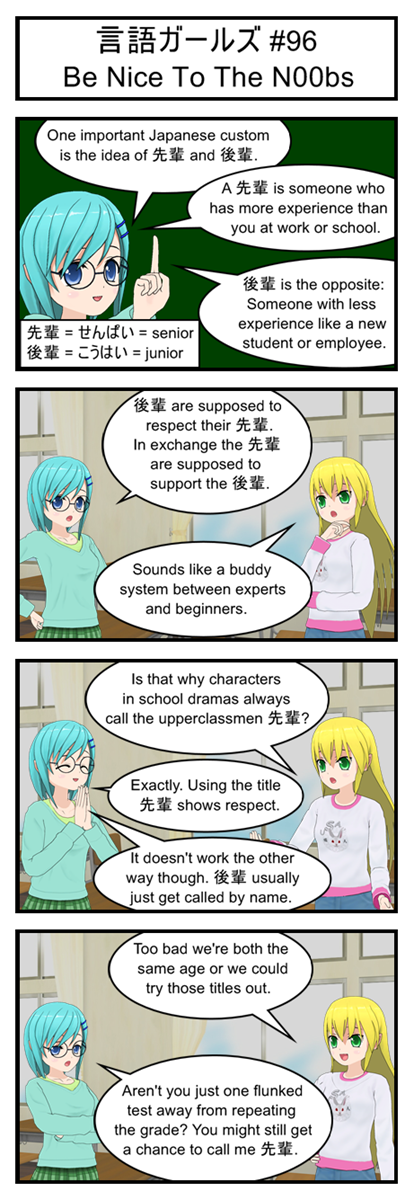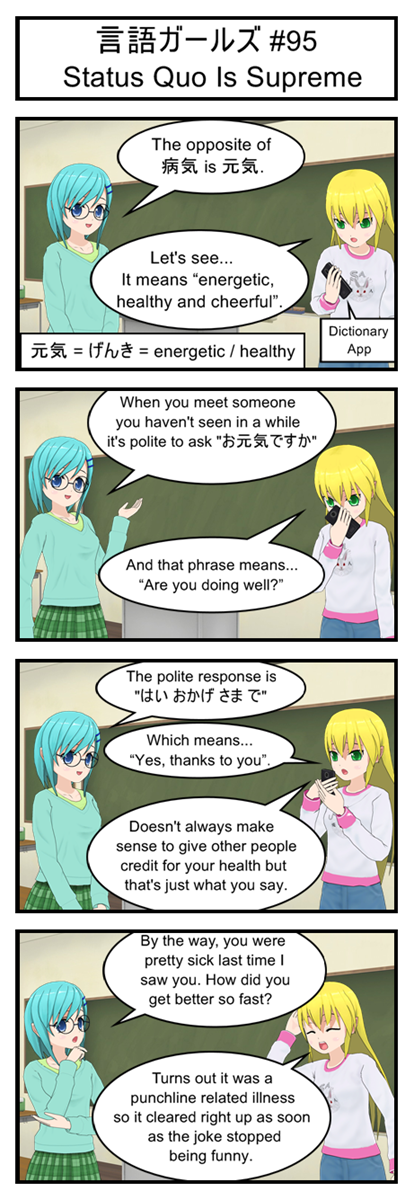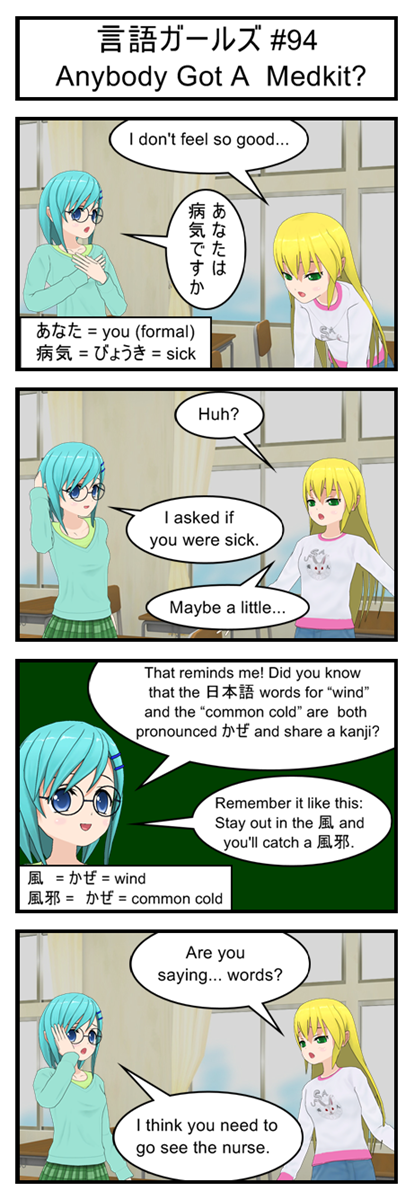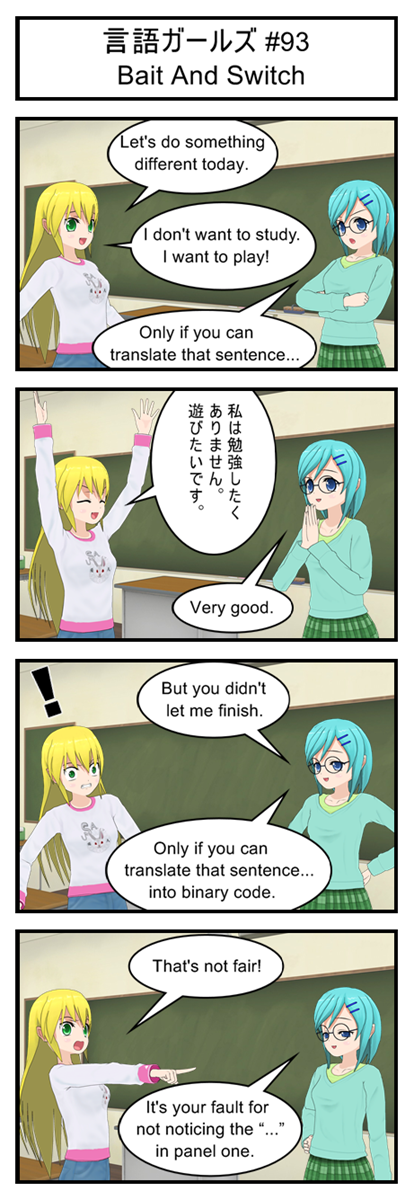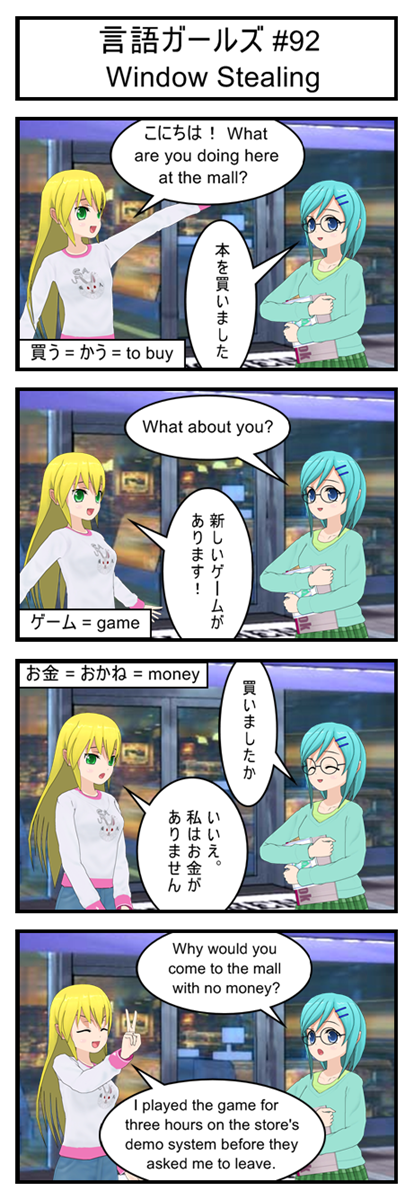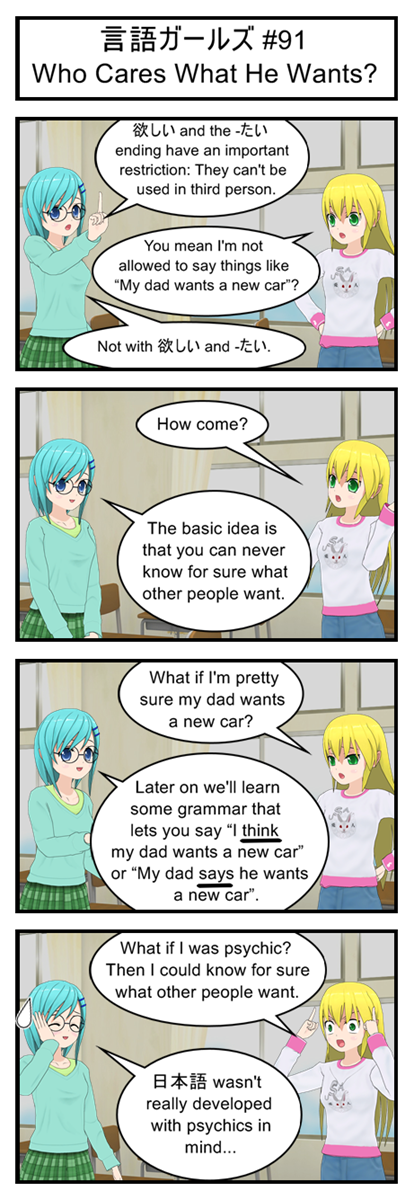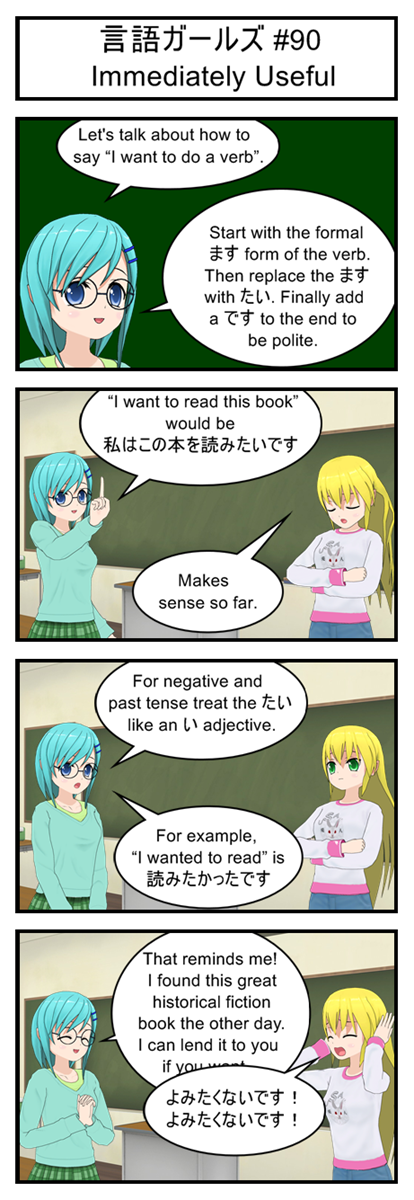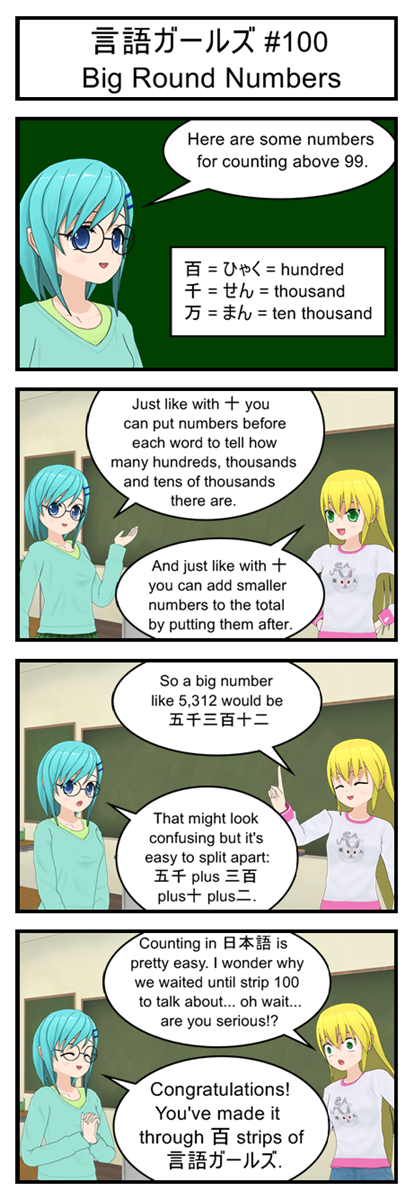
Yes, I purposely manipulated lesson order to make sure the kanji for 100 was introduced in strip 100. My deepest apologies.
Vocabulary
百 = ひゃく = hundred
千 = せん = thousand
万 = まん = ten thousand
Transcript
言語ガールズ #100
Big Round Numbers
Blue: Here are some numbers for counting above 99.
Blue: Just like with 十 you can put numbers before each word to tell how many hundreds, thousands and tens of thousands you have.
Yellow: And just like with 十 you can add smaller numbers to the total by putting them after.
Yellow: So a big number like 5,312 would be 五千三百十二
Blue: That might look confusing but it’s easy to split apart: 五千 plus 三百 plus十 plus二.
Yellow: Counting in 日本語 is pretty easy. I wonder why we waited until strip 100 to talk about… oh wait… are you serious!?
Blue: Congratulations! You’ve made it through 百 strips of 言語ガールズ.
